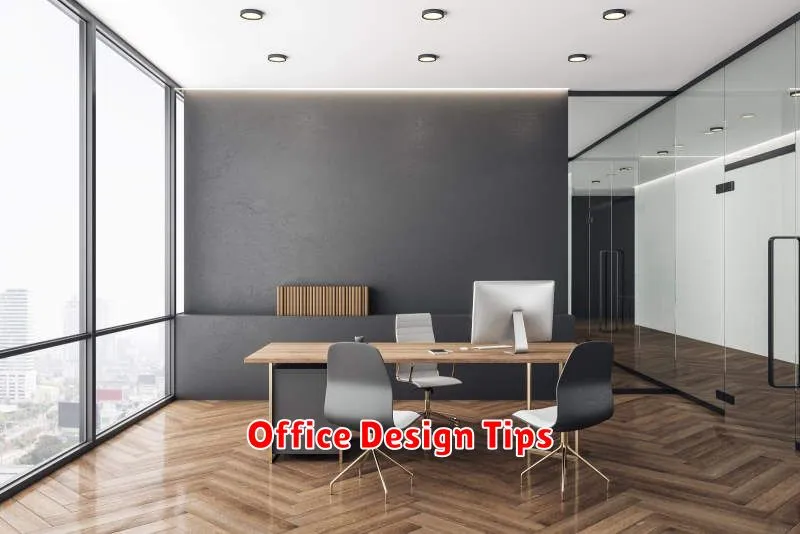Boost your productivity and transform your workspace with these 5 creative home office decor ideas. Creating a functional and inspiring home office can significantly impact your work efficiency. This article explores innovative design solutions to enhance your home office decor, fostering a more productive and enjoyable work environment. Discover practical tips and stylish ideas to elevate your workspace and unlock your full potential. Learn how to curate a creative and productive haven for your daily work tasks.
Ergonomic Desk Chairs
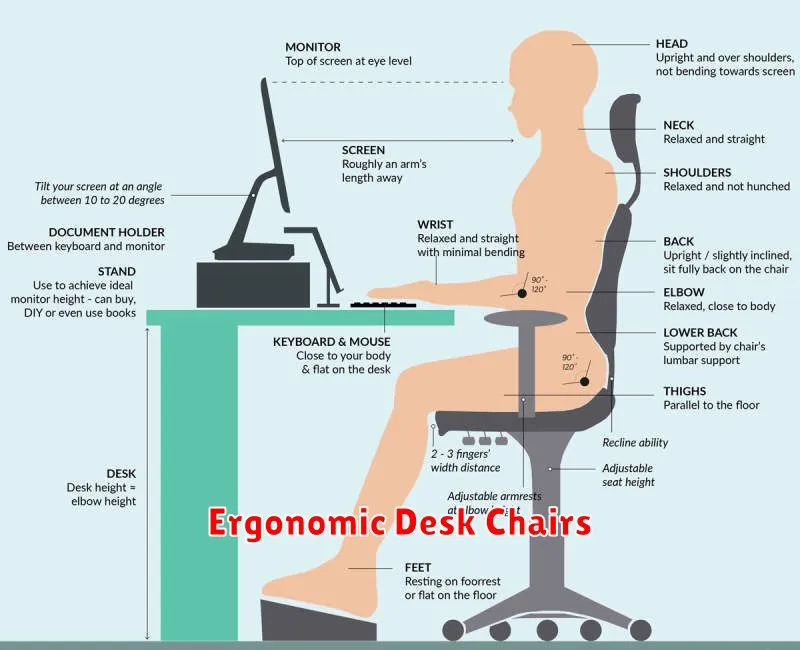
Choosing the right desk chair is crucial for maintaining good posture and preventing discomfort during long hours of sitting. A poorly designed chair can contribute to various health problems, including back pain, neck pain, and carpal tunnel syndrome. Investing in an ergonomic chair is an investment in your long-term health and well-being.
Ergonomic chairs are designed with features that promote proper posture and support the natural curves of your spine. Key features to look for include adjustable height, lumbar support, adjustable armrests, and a breathable backrest. These adjustments allow you to customize the chair to your specific body type and needs, ensuring optimal comfort and support.
The height adjustability allows you to position your feet flat on the floor with your thighs parallel to the ground. Lumbar support is essential for maintaining the natural curve of your lower back, preventing strain and discomfort. Adjustable armrests provide support for your arms and wrists, reducing strain on your shoulders and neck. A breathable backrest helps to prevent overheating and discomfort during extended periods of sitting.
Consider the materials used in the chair’s construction. High-quality materials will provide greater durability and comfort. Look for chairs made from breathable fabrics and durable frames. The chair’s weight capacity should also be considered, ensuring it can comfortably support your weight.
Before purchasing, it’s recommended to test the chair in person if possible. Sit in the chair for a few minutes to assess its comfort and adjustability. Read customer reviews to gain insights into the chair’s durability and overall user experience. Selecting the right ergonomic desk chair is a significant step towards improving your comfort, productivity, and overall health.
Wall-Mounted Desk Setup
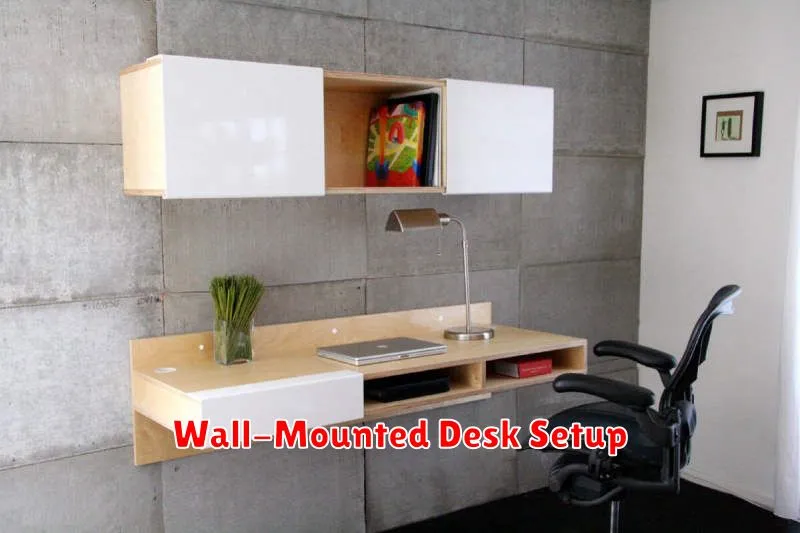
A wall-mounted desk offers a space-saving and aesthetically pleasing solution for those with limited floor space. This setup is particularly beneficial in smaller apartments, studios, or home offices where maximizing vertical space is crucial.
The advantages of a wall-mounted desk are numerous. Beyond the obvious space-saving benefits, a well-designed setup can enhance the overall aesthetic of a room. The desk can be folded away when not in use, creating a clean and uncluttered environment. This makes it ideal for those who appreciate a minimalist design.
Installation varies depending on the desk’s design and the wall’s construction. Some models require professional installation due to the weight and necessary structural support. However, others are designed for simpler DIY installation with appropriate tools and materials. Always check the manufacturer’s instructions before beginning installation.
Choosing the right desk is paramount. Consider the materials, size, and weight capacity. Opt for a desk made of durable materials such as high-quality wood or sturdy metal. Ensure the chosen desk is appropriately sized for your workspace needs and can support the weight of your equipment.
Proper ergonomics should be considered. Ensure the desk is positioned at a comfortable height to prevent strain on the neck, back, and wrists. A proper chair is also essential for maintaining comfortable posture during prolonged periods of work. Investing in ergonomic accessories, such as a keyboard tray, can further enhance user comfort and prevent fatigue.
In conclusion, a wall-mounted desk provides a practical and stylish solution for creating a functional workspace within limited space. Careful planning, selection of materials, and proper installation contribute to a successful and ergonomic setup that maximizes efficiency and comfort.
Use of Greenery for Relaxation
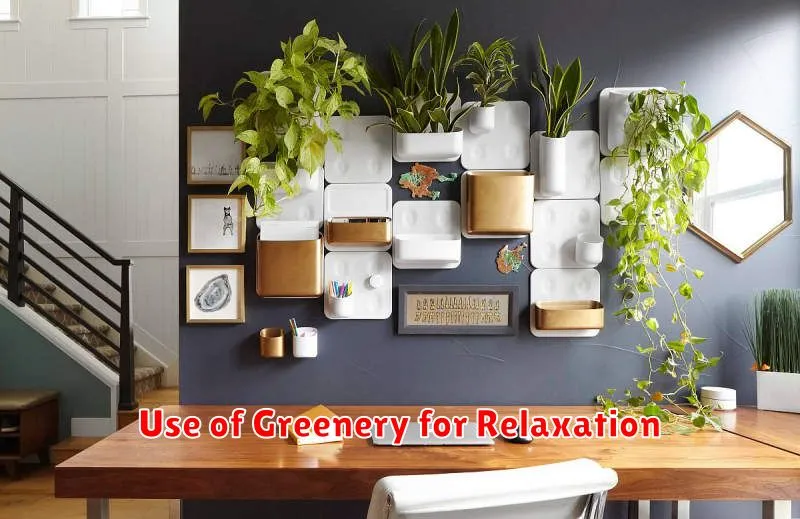
The incorporation of greenery into our living and working spaces has gained significant traction in recent years, driven by a growing understanding of its positive impact on mental and physical well-being. Studies consistently demonstrate the restorative effects of nature, highlighting its crucial role in stress reduction and improved cognitive function.
Exposure to natural elements, particularly plants and foliage, has been linked to lower levels of cortisol, the stress hormone. This reduction in cortisol contributes to a feeling of calmness and relaxation, counteracting the negative effects of chronic stress prevalent in modern lifestyles. The presence of greenery can create a more peaceful and tranquil atmosphere, providing a much-needed respite from the demands of daily life.
Beyond stress reduction, greenery enhances the overall aesthetics of a space. The introduction of plants can add vibrancy and visual interest, creating a more inviting and aesthetically pleasing environment. This improved aesthetic quality contributes to a heightened sense of well-being, further promoting relaxation and a positive emotional state. The carefully chosen colors and textures of plants can also enhance the overall design of a room, creating a cohesive and harmonious atmosphere.
Furthermore, the act of caring for plants can be therapeutic in itself. The routine involved in watering, pruning, and tending to plants provides a sense of purpose and accomplishment. This mindful engagement with nature can be a meditative practice, further enhancing the overall relaxation benefits associated with incorporating greenery into one’s surroundings. The gentle act of nurturing life fosters a sense of connection and responsibility, contributing to emotional well-being.
In conclusion, the strategic use of greenery offers a multifaceted approach to relaxation and stress reduction. Its ability to lower cortisol levels, improve aesthetics, and provide a therapeutic activity makes it a valuable asset in creating calming and restorative environments. Whether in homes, offices, or public spaces, the incorporation of greenery offers a powerful tool for enhancing overall well-being.
Compact Storage Solutions
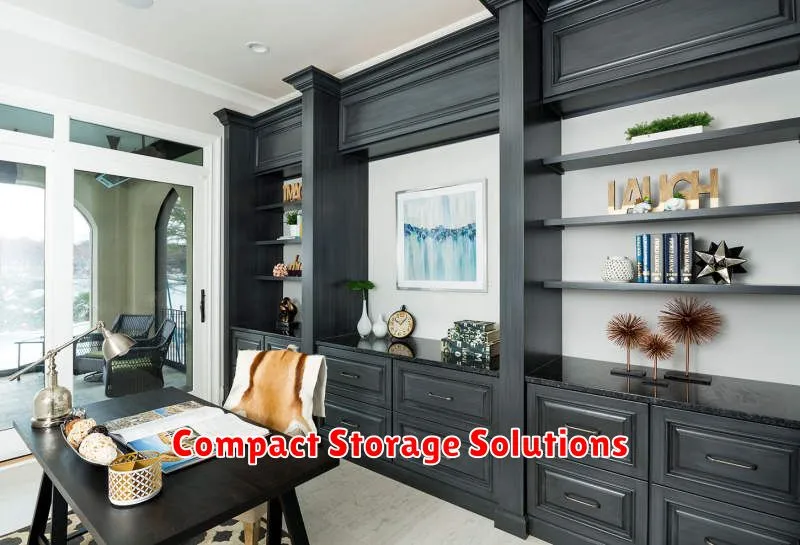
Maximizing space in smaller living areas requires strategic storage solutions. Clever design and the utilization of often-overlooked areas are key to achieving a clutter-free and organized environment.
Vertical space is often underutilized. Tall, narrow shelving units can fit snugly in corners or along walls, providing ample storage without encroaching significantly on floor space. Multi-functional furniture, such as ottomans with built-in storage or beds with drawers underneath, combines practicality with aesthetic appeal.
Under-bed storage is another excellent option. Clear storage bins allow for easy identification of contents, while fabric storage containers provide a more visually appealing alternative. Wall-mounted shelves are ideal for displaying decorative items or storing frequently used items, keeping them readily accessible while freeing up valuable floor and counter space.
Foldable furniture is a game-changer for small spaces. Folding chairs, tables, and even beds can be easily stored away when not in use, transforming a room’s functionality. Investing in space-saving appliances, such as compact refrigerators or stackable washers and dryers, further contributes to a more organized and efficient space.
Careful consideration of organization systems is crucial. Using drawer dividers, shelf risers, and labeled containers helps maintain order and prevents items from becoming jumbled. Regular purging of unwanted items is also essential to prevent clutter from accumulating and overwhelming the available space.
Ultimately, the most effective compact storage solutions involve a combination of clever design, functional furniture, and efficient organization techniques. By strategically utilizing every inch of available space, even the smallest living areas can be transformed into comfortable and organized havens.
Lighting for Focus
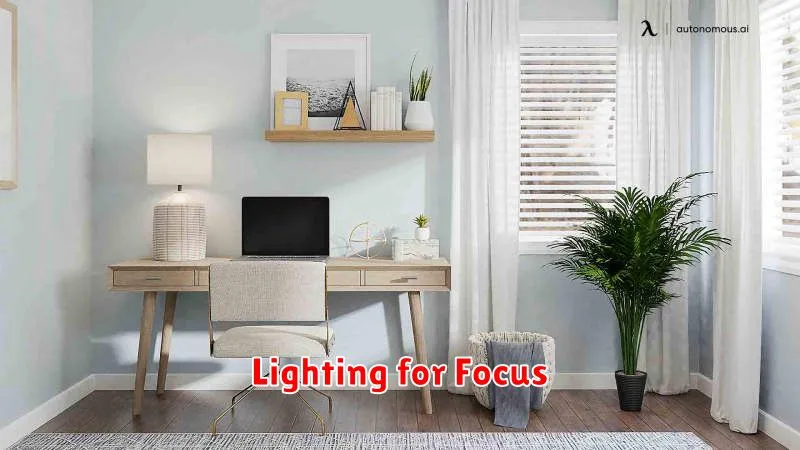
Proper lighting is crucial for maintaining focus and productivity. Poor lighting can lead to eye strain, headaches, and decreased concentration, significantly impacting your ability to work effectively.
Natural light is generally considered the best option. Positioning your workspace near a window allows you to benefit from the natural light cycle, which can help regulate your body’s natural rhythms and improve alertness. However, it’s important to manage direct sunlight to avoid glare and harsh shadows.
If natural light is limited, you’ll need to rely on artificial lighting. LED lighting is an excellent choice, offering energy efficiency and a wide range of color temperatures. A color temperature of around 5000K (daylight) is often recommended for optimal focus.
Avoid harsh, flickering lights, which can be extremely distracting and lead to eye fatigue. Opt for soft, diffused light to create a comfortable and productive environment. Consider using task lighting, such as a desk lamp, to supplement ambient lighting and illuminate your work area directly.
Remember to consider the brightness of your lighting. Too much light can be just as disruptive as too little. Adjust the brightness to suit your needs and the time of day. Experiment with different lighting options to find what works best for you and your specific work environment.
In addition to the type and brightness of your lighting, consider the placement of lights. Avoid placing lights directly in your line of sight or creating harsh shadows that might interfere with your work. Proper lighting can significantly improve your comfort, productivity, and overall well-being.

